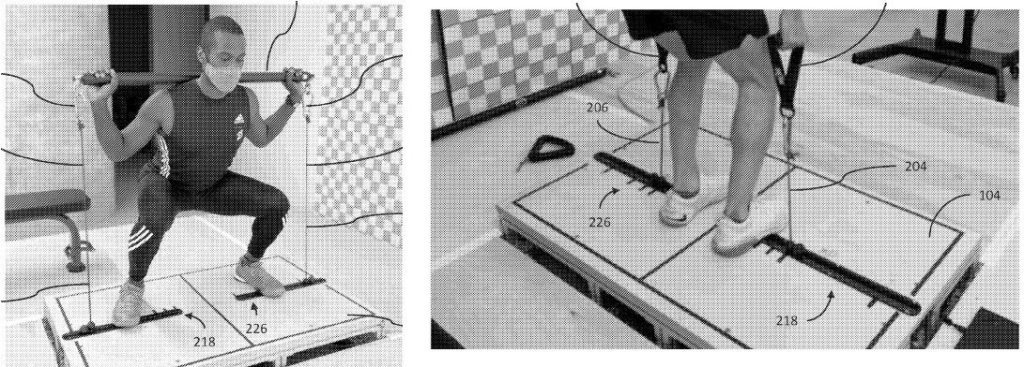
We’ve known Peloton has been working on a competitor to Tonal for a while now. Pricing surveys that were sent to members last year referred to this upcoming strength device as the “Peloton Platform.” Yesterday, real-life photos of the device being used have been discovered. Check them out below.
We recently covered Peloton’s upcoming strength device because of new patents they had filed. The device and patents looked suspiciously similar to another smart strength device called the Vitruvian + (see our demo here).
These new images, discovered by Bob Treemore, still look almost identical to the Vitruvian+, with several upgrades and a more polished look. The images were filed with Peloton’s current patent for the device, which is still under review.
The most notable difference between the Peloton Platform and Vitruvian+ is the placement of the cable attachments. These are placed in the center on the Peloton, whereas the Vitruvian+ has them slightly closer to one side.

The other big difference is that the placement of the cable attachments on the Peloton look like they will be able to adjusted closer and farther away from the center. This would allow for a wider placement when using a barbell attachment to improve stability, and would also allow for a more narrow attachment which is more optimal for handle attachments.

Another change is an LED indication on the Peloton Platform itself. One of the pictures show this LED display being used to indicate that the weights have been locked and another seem to indicated the current weight being used.

Additionally, the included bench seems to have a tray underneath to be able to store all of the cable attachments. While we noticed this before, the new pictures seem to indicate that this try will be able to magnetically charge all of the smart attachments placed on them. This is a really good solution to a problem many other smart strength devices struggle with (they usually require you to replace the batteries on each device every few months).

While Peloton fans should be excited by these pictures, this should also be taken in with some context. For one, these are all part of a patent that is still under review and has not yet been granted. Secondly, even if granted there is no guarantee that Peloton will release this anytime soon, if at all. And thirdly, given Peloton’s new business strategy, you can expect a very high price. If I had to guess, I would say this will cost around $5,000 USD.

Let me know what you think in the comments below.
Suggested articles:
- 15 Peloton accessories that are actually amazing
- Want to send a Peloton holiday card? Here’s how!
- Peloton Row vs Concept 2 vs Hydrow (and more!) rower comparison
FTC: We use income earning auto affiliate links. More.
